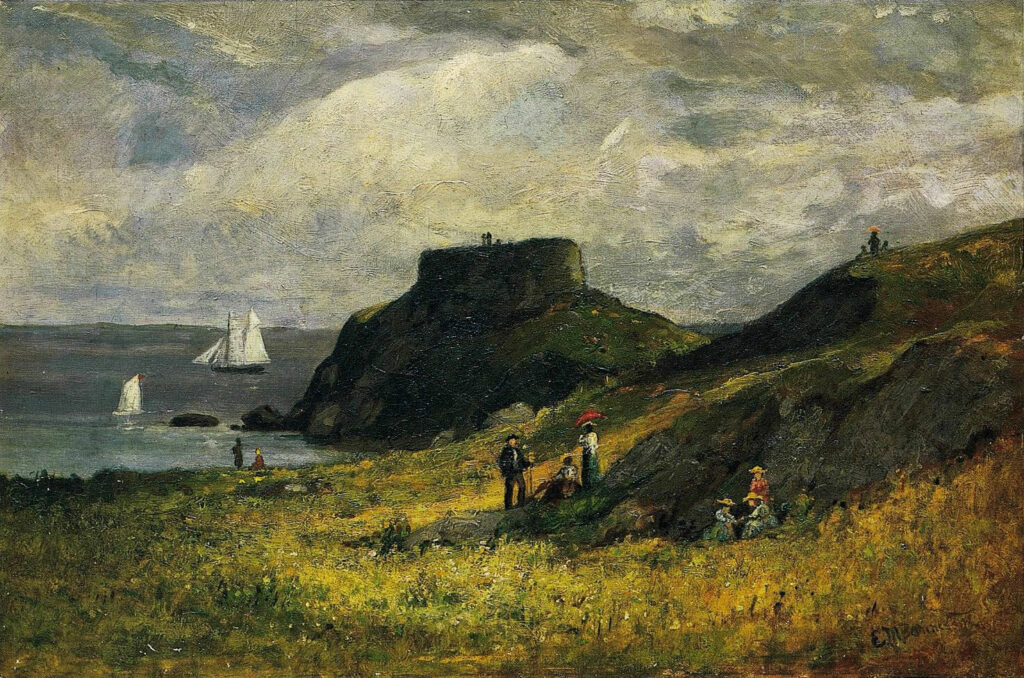While Bannister’s seascapes and landscapes may appear to be idyllic settings, they often allude to the history of the transatlantic slave trade, in which Rhode Island played a leading role. In Fort Dumpling, Jamestown, Rhode Island, n.d., small groups of people are dispersed throughout the hilly landscape, enjoying the sunny skies and seaside views. Within this charming scene of leisure, Bannister has inserted a dark symbol: the large ship in the left middle ground resembles “slavers,” lightweight sloops assembled in Rhode Island that were designed to carry 125 to 150 passengers. The slave trade in Rhode Island lasted from 1725 until 1807, when it was abolished, although it continued illegally into the 1830s. As an active abolitionist, Bannister may have felt compelled to address this important history in his paintings. However, his subtle approach suggests an acute awareness that many of his wealthy patrons belonged to families that had benefitted economically from the slave trade.
Artist and Abolitionist
-
Edward Mitchell Bannister, Fort Dumpling, Jamestown, Rhode Island, n.d.
Oil on canvas, 40.6 x 61 cm, private collection.
